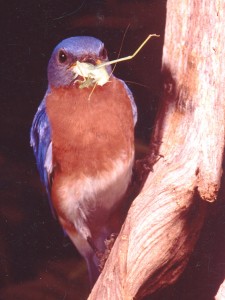 Most granivorous, frugivorous, nectarivorous, and herbivorous birds feed their fast-growing young a diet of insects, spiders, and other invertebrates.
Most granivorous, frugivorous, nectarivorous, and herbivorous birds feed their fast-growing young a diet of insects, spiders, and other invertebrates.The composition of insects is variable, depending on the species and the stage of the life cycle. Adult insects contain 50-75% protein and 5-35% lipid with low levels of nonchitin carbohydrate. Larvae of butterflies and moths contain 40-70% protein and 10-40% lipid. The amino acid balance of insects relative to the requirement of birds is almost as good as vertebrate prey and much better than plant proteins.
Insects are also a good source of phosphorus, most of the trace minerals, and vitamins, but are low in calcium. The chitinous exoskeleton of insects is difficult to digest.
The proventriculus, which supplies pepsin and hydrochloric acid for protein digestion, is large in insectivorous birds. Species that consume soft-bodied insects have small gizzards, but those that consume hard-bodied insects have larger and more muscular gizzards. Insectivores typically have small ceca.
The proportion of chitin in insects varies from 18-60%, and birds often select insects that contain low amounts of chitin. Birds either remove much of the chitinous part of the insect before swallowing or egest the undigested exoskeletons.